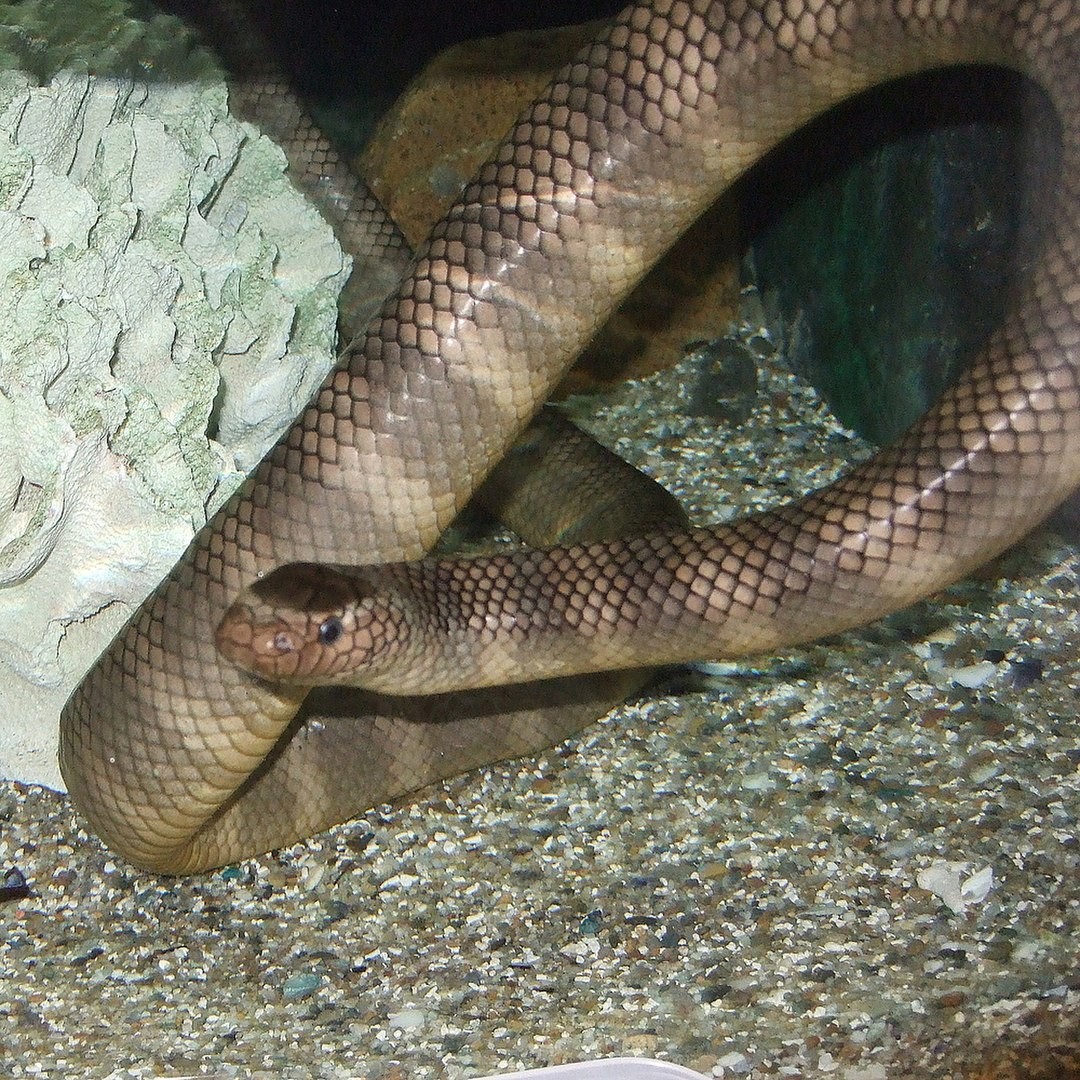Chinese sea snake
A species of Sea kraits, Also known as Black-banded sea krait Scientific name : Laticauda semifasciata Genus : Sea kraits
Chinese sea snake, A species of Sea kraits
Also known as:
Black-banded sea krait
Scientific name: Laticauda semifasciata
Genus: Sea kraits
Content
Description General Info
 , used under CC BY-SA 2.5 /Cropped and compressed from original
, used under CC BY-SA 2.5 /Cropped and compressed from original Description
The black-banded sea krait, or Chinese sea snake (Laticauda semifasciata), known in Japan as erabu umi hebi (ja:ã¨ã©ãã¦ããã), and Okinawa as the irabu, is a member of the Laticauda genus of sea snakes. It is found in most of the warm waters of the western Pacific Ocean.
General Info
Lifespan
10-15 years
Diet
Chinese sea snake primarily feeds on eels and small fishes using venom secreted from its postoral gland. Despite being an efficient swimmer, it prefers hunting in tide pools, using unique prey-capturing strategies, often during high tide.
Appearance
Chinese sea snake is a moderately large sea snake, its body is cylindrical and covered in smooth scales. It has a distinctive black and blue ringed pattern along its length, fading onto a yellow underside. Chinese sea snake's tail is uniquely flattened, resembling a paddle for effective underwater movement. Male and female share a similar appearance, however, adult females are noticeably larger than males.
Behavior
Chinese sea snake demonstrates semi-aquatic behavior, typically foraging in terrestrial and marine environments. Primarily nocturnal, it evades predators by hiding in vegetative cover during the day. It exhibits vivid color displays for defense and courtship, showing unique intraspecies communication. Sea krait occur solitarily or in aggregations, showing complex social structures. Savvy in resource utilization, it marks caves as resting spots, defending them aggressively.

 , used under CC BY-SA 2.5 /Cropped and compressed from original
, used under CC BY-SA 2.5 /Cropped and compressed from original Scientific Classification
Phylum
Chordates Class
Reptiles Order
Lizards and snakes Family
Elapids Genus
Sea kraits Species
Chinese sea snake